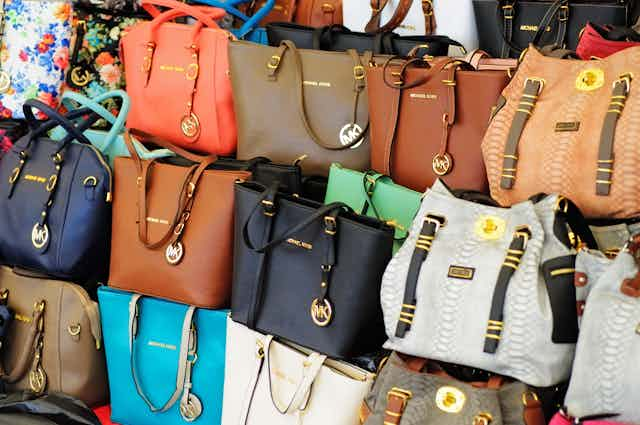Counterfeiting is a chronic problem faced by Canadian consumers. According to Canadian manufacturers and exporters, counterfeiting — or the sale of products that purport to be something they are not — costs Canada between $20 billion and $30 billion annually.
Canada is not the only country struggling with counterfeiting — the practice is prevalent in many other countries and across different industries. A 2017 World Health Organization study found that around 10 per cent of medicines sold in developing countries may be deceptively counterfeit.
Similarly, the U.S. Government Accountability Office found that 20 of 47 items purchased from third-party sellers such as Amazon, eBay and Sears Marketplace were counterfeits. Examples included counterfeit versions of 3M N95 masks on Amazon.
Given the scale of this ongoing issue, Canadian governments and industries must come together to design new strategies that will protect Canadians while maintaining the country’s competitive advantage in the global marketplace.
Contributing factors
Several diverse factors contribute to the persistence of counterfeit goods in Canada. The first relates to consumer behaviour, as some buyers may intentionally buy (or fail to avoid) counterfeit goods out of shrewdness or economic necessity.
Second, in terms of product quality, fakes can be very similar to the real thing. For example, the Canadian Intellectual Property Council reported that a counterfeit version of a particular Procter & Gamble shampoo was so close to the original even the company’s own sales force couldn’t tell the difference.

Third, Canadian laws on counterfeit goods are notoriously lax, hindering effective enforcement. In fact, the Office of the United States Trade Representative has placed Canada on its watchlist of countries offering the weakest intellectual property (IP) protections.
A fourth factor stems from outsourcing production to overseas suppliers. This leads to a form of counterfeiting called the “third shift.” After a business outsources production, the supplier uses the business’ IP rights to produce counterfeit products in the same factory the original product is made.
Canadian home product manufacturer Umbra has been plagued by numerous suppliers using a third shift to reproduce its products.
Finally, although some customers may rely on review systems to assess the authenticity of items they buy online, these systems are far from reliable. Counterfeit sellers have found ways to manipulate the review system — by purchasing fraudulent five-star reviews, for example.
In light of these difficulties, Canada needs a carefully thought-out approach to mitigate counterfeiting.
Combating counterfeits
Because the source of counterfeit products is often the same factory that produces the original product, one remedy is to provide supplier factories with limited quantities of raw materials. Hewlett-Packard does this by providing its suppliers with a certain number of printheads that are used to manufacture ink cartridges for the company.
Another solution is to allocate parts to different suppliers so that no one supplier has all the parts needed to build a particular product.

At the same time, many emerging market governments are stepping up enforcement efforts to strengthen IP protections. In 2020, China’s State Administration for Market Regulation released an IP enforcement plan called Iron Fist to better protect the IP rights of various manufacturers.
Similarly, India’s IP strategy is to “put greater emphasis on trademark enforcement.”
The Philippine government’s recent IP legislation aims to “ensure efficient and expeditious adjudication of IP cases” and make “IP litigation less costly and faster.”
For these governments, addressing IP protection is critical to ensuring manufacturers continue to feel comfortable outsourcing operations to their countries. As such, Canada should prioritize and incentivize outsourcing to countries that embrace IP protections.
Using technology
Businesses can also use technologies, such as radio-frequency identification or holograms, on their products to help customers identify counterfeits.
Recently, blockchain technology has been considered as a promising solution to counterfeiting. Several blockchain-based applications have been launched with the aim of tagging products with unique identifiers that can’t be duplicated.
Blockchain solution provider BlockPharma helps patients check the authenticity of their medicines, while luxury goods giant LVMH Group has partnered with blockchain firm ConsenSys and Microsoft to authenticate products.
This tech-focused strategy aligns with the fact that governments around the world are increasingly encouraging blockchain adoption. The U.K. government, through Innovate UK, has pledged the equivalent of C$24 million to fund blockchain companies and the European Union Intellectual Property Office uses blockchain for anti-counterfeit.
A joint approach is key
The many factors that increase Canada’s risk concerning counterfeits, including weak laws and IP protections, make this a challenging policy issue.
However, anti-counterfeit strategies and the advent of new technologies like blockchain present opportunities for Canadian policymakers and industry leaders to develop an effective plan to combat counterfeiting.
Together, Canada’s business and political leaders can build consumer trust while further building Canada’s global advantage.

